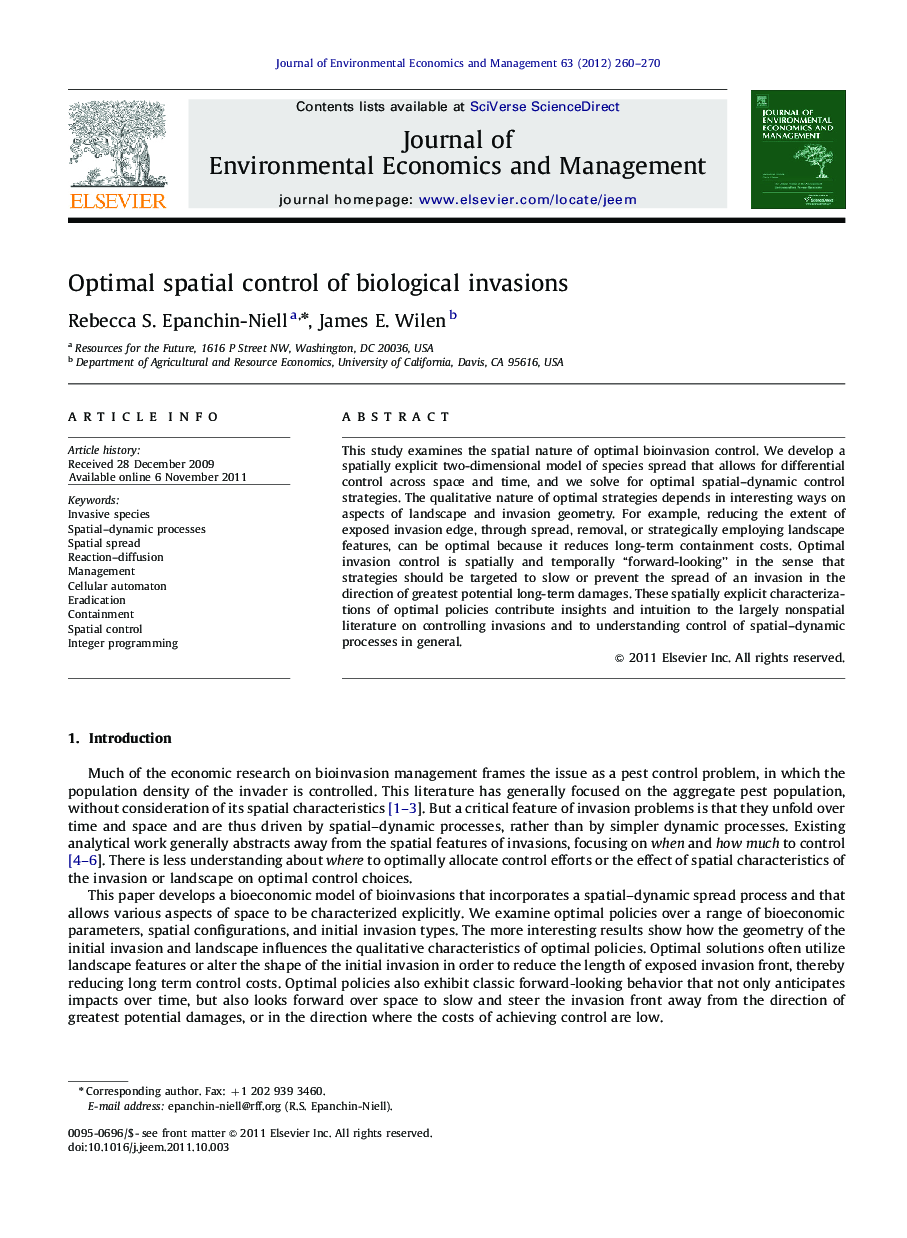| Article ID | Journal | Published Year | Pages | File Type |
|---|---|---|---|---|
| 959012 | Journal of Environmental Economics and Management | 2012 | 11 Pages |
This study examines the spatial nature of optimal bioinvasion control. We develop a spatially explicit two-dimensional model of species spread that allows for differential control across space and time, and we solve for optimal spatial–dynamic control strategies. The qualitative nature of optimal strategies depends in interesting ways on aspects of landscape and invasion geometry. For example, reducing the extent of exposed invasion edge, through spread, removal, or strategically employing landscape features, can be optimal because it reduces long-term containment costs. Optimal invasion control is spatially and temporally “forward-looking” in the sense that strategies should be targeted to slow or prevent the spread of an invasion in the direction of greatest potential long-term damages. These spatially explicit characterizations of optimal policies contribute insights and intuition to the largely nonspatial literature on controlling invasions and to understanding control of spatial–dynamic processes in general.
